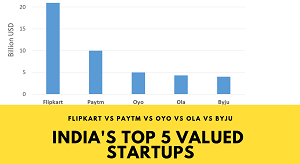In the highly competitive world of tech startups, growth-stage companies face immense pressure to scale their operations while maintaining efficiency and optimizing user experience. North Star Metrics have emerged as key indicators for companies to track their success and drive sustained growth. In this blog, we’ll delve deep into the key metrics used by over 40 growth-stage tech companies, analyze the strategies they employ, and explore real-world examples of how these metrics have driven success.
What Are North Star Metrics? 🌟
A North Star Metric (NSM) is the single metric that best captures the core value that your product delivers to customers. It’s not just about revenue but the intersection of revenue, user growth, and engagement that reflects the long-term success of the company.
Why are they important?
These metrics allow companies to focus on growth that directly correlates with customer satisfaction and retention. Instead of looking at vanity metrics like total downloads or page views, companies focus on meaningful engagement, creating a sustainable growth loop.
Why Growth-Stage Companies Focus on These Metrics 🎯
Growth-stage tech companies are at a crucial juncture where they need to balance rapid scaling with operational efficiency. The North Star Metrics guide their decision-making by ensuring that all efforts — from product development to marketing — align with long-term value creation. The companies listed in the image, such as Airbnb, Spotify, Uber, and Slack, have one common thread — they rely heavily on their North Star Metric to maintain focus and drive the right behaviors.
Let’s break down these North Star Metrics across several key dimensions
Revenue Metrics: Ensuring Financial Growth 💰
Airbnb: Nights Booked
Metric: Nights Booked
Strategy: Optimizing the number of transactions
One of Airbnb’s most critical North Star Metrics is the number of nights booked. This reflects direct revenue generation and engagement with the platform. The strategy focuses on optimizing the number of bookings per user while ensuring hosts are satisfied with the platform’s overall experience.
Use case: A user looking for a vacation stay finds a property that fits their budget and preferences, successfully books it, and has a great experience. This leads to higher engagement and more referrals — both from the host and the traveler, thus fueling a positive feedback loop.
Coinbase: Monthly Transacting Users (MTUs)
Metric: Monthly Transacting Users
Strategy: Optimizing the number of transactions
For Coinbase, the key focus is the number of users engaging in transactions each month. Revenue is tied directly to the volume of transactions, and hence, increasing MTUs correlates with higher overall profits.
Use case: An investor looking to diversify their crypto portfolio regularly transacts on Coinbase, enabling consistent monthly growth in active users.
Customer Growth Metrics: Building a Strong User Base 🚀
HubSpot: Weekly Active Users (WAUs)
Metric: Weekly Active Users
Strategy: Optimizing user engagement
HubSpot, a giant in CRM and marketing automation software, tracks Weekly Active Users to gauge customer interaction with the platform. This metric is crucial for ensuring that users derive ongoing value from their software solutions. Increasing the WAU correlates with better customer retention and more upsell opportunities.
Example: A marketing manager logs into HubSpot weekly to automate campaigns, track leads, and analyze performance data. The consistent use ensures the company grows alongside the success of its users.
Robinhood: Total Net Funded Users
Metric: Total Net Funded Users
Strategy: NPS (Net Promoter Score) and optimizing the number of active users
Robinhood uses Total Net Funded Users to reflect growth in both new users and their willingness to deposit funds into their accounts. Robinhood ties its growth to user satisfaction, focusing on increasing its Net Promoter Score (NPS), which indicates how likely users are to recommend the service to others.
Engagement Metrics: Enhancing User Experience ❤️
Netflix: Median View Hours per Month
Metric: Median View Hours per Month
Strategy: Optimizing depth of engagement
Netflix’s success is based on how long users stay on the platform, which is measured through median viewing hours. This metric reflects the content’s ability to keep users engaged and entertained for longer periods, leading to lower churn rates and higher subscriptions.
Example: A Netflix subscriber spends several hours each week binge-watching new shows, helping to boost median viewing hours.
Instagram: Daily Active People
Metric: Daily Active People (DAP)
Strategy: Optimizing user engagement
Instagram’s North Star Metric is Daily Active People, which represents how frequently users engage with the platform. Instagram optimizes its algorithms and features to increase user engagement, leading to higher ad revenue and brand partnerships.
Consumption Growth Metrics: Optimizing Usage 📈
Spotify: Consumption Hours (for Podcasts)
Metric: Consumption Hours
Strategy: Optimizing depth and engagement
Spotify not only tracks the number of paid subscribers but also focuses on Consumption Hours for podcasts as a growth lever. The more hours users spend consuming content on Spotify, the more likely they are to stay loyal to the platform.
Example: A podcast listener spends hours weekly on Spotify, discovering new content and staying engaged with the app, driving overall consumption growth.
Strava: Monthly Active Users (MAU)
Metric: Monthly Active Users
Strategy: Optimizing user engagement
Strava tracks Monthly Active Users to understand how often users engage with the app. Higher MAUs translate to better brand engagement and potential upgrades to premium subscriptions.
User Experience Metrics: Driving Customer Retention 🌱
Superhuman: Delighted Rate + NPS
Metric: Delighted Rate + Net Promoter Score (NPS)
Strategy: Optimizing revenue growth and quality of experience
Superhuman, an email productivity tool, places immense importance on its Delighted Rate, a measure of how satisfied users are with the product. They also track their Net Promoter Score, which indicates how likely users are to recommend the service to others. A higher Delighted Rate ensures better customer retention and word-of-mouth growth.
Use case: A user who experiences a fast, seamless email experience with Superhuman is likely to promote the product to colleagues, increasing organic growth.
Dropbox: Teams Using Dropbox Business
Metric: Teams Using Dropbox Business
Strategy: Optimizing the number of paid teams
Dropbox Business focuses on tracking the number of teams using its platform to reflect both user engagement and customer retention. By focusing on business users, Dropbox ensures a higher lifetime value (LTV) per customer.
Strategic Takeaways from Top Tech Companies
Through the lens of these North Star Metrics, we can see several emerging trends across growth-stage tech companies:
User Engagement Drives Growth: Whether it’s Netflix focusing on median view hours or Instagram tracking daily active people, companies that drive user engagement see a direct correlation with growth.
Revenue Is a Lagging Indicator of Success: Many companies, such as Coinbase and Airbnb, focus on transactional metrics rather than revenue. When users are engaged and satisfied, revenue naturally follows.
Customer Satisfaction Is Key to Retention: Superhuman’s focus on its Delighted Rate and NPS shows how crucial it is to keep customers happy for long-term growth.
Conclusion: Aligning Your Business with a North Star Metric
For any growth-stage tech company, the path to success isn’t just about maximizing profits or acquiring new users. It’s about finding that one North Star Metric that captures the essence of your product’s value and drives growth in a meaningful, sustainable way.
Startups should carefully define their North Star Metric based on what drives engagement, satisfaction, and ultimately, long-term revenue growth. Take inspiration from these top tech companies and align your efforts to optimize for what truly matters.
🚀 Ready to find your company’s North Star Metric and scale to new heights? Focus on what drives value, and watch your growth skyrocket.

















